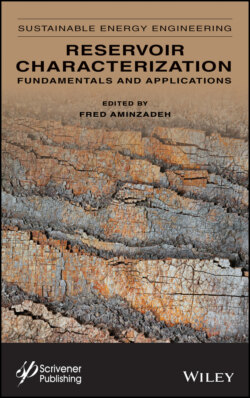Читать книгу Reservoir Characterization - Группа авторов - Страница 23
1.5.1 4D Seismic for DRC
ОглавлениеChanges in the reservoir fluids or pressure distribution can be imaged by 4D. This is based on the impact of fluid saturation and reservoir pressure on the changes in compressional and shear wave velocities of seismic waves. A simplistic idea is to directly subtract two 3D seismic volumes of acquired in say successive years. This is often referred to as 4D seismic, with the fourth dimension being the time lapse between the two 3D seismic surveys. An example of time lapse seismic is in Figure 1.6. As the reservoir is produced, the distribution of the fluid properties changes with time but the reservoir rock frame properties remain constant during the producing life of the reservoir. Therefore, by repeating the seismic measurements i.e., acquiring time lapse seismic data and computing the differences in the seismic attributes between the measurements the changes in the distribution of reservoir fluid properties between wells could often be detected.
Figure 1.6 Time-lapse seismic response changes caused by different positions of oil-water contact (OWC) in Gullfaks field Tarbert reservoir. (a) Oil-water contact level before production and (b) after production for 10 years. Zones with changes in seismic impedance are circled. http://accessscience.com.
The changes in time lapse seismic data are due to the acoustic impedance variation (in this case, mostly the compressional velocity change), caused by the reservoir production or other changes (such as water or CO2 injection in the EOR process). Acoustic impedance is the product of velocity (V) and density (ρ), for time lapse seismic amplitudes are influenced by the incompressibility (Krock) of the reservoir rock and the production-generated changes in the incompressibility of the pore fluids (∆Kfluids).
The reservoir rocks must therefore be sufficiently compressible so that there is a prominent and measurable contribution from the pore fluids. Soft compressible rocks like unconsolidated sands (younger in geologic times) are ideal for time lapse seismic while rigid or incompressible reservoir rocks such as carbonates do not lend themselves for effective application of this technology.
The acquisition and processing parameters for different vintage 3D seismic should either be the same or necessary calibration should be applied to make them consistent. That is the seismic response should be identical when no changes in the geologic formation due to injection of production has taken place. Some of these difficulties may be mitigated by using permanent sensors in wells and recording time lapse data.
